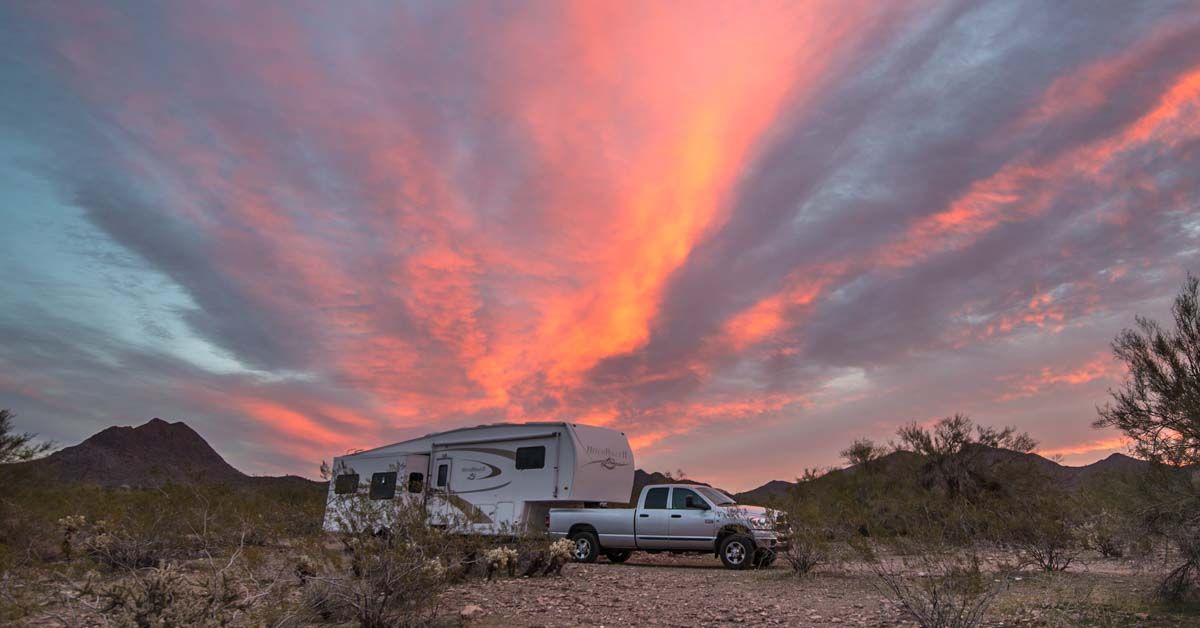

Public Lands Websites (Federal)įederal, state, and local public lands websites all have camping resource information somewhere on their site.

When navigating the iOverlander map look for sites that have the “ big rig friendly” designator. – Primarily used by the overlanding and off-roading community worldwide, the iOverlander directory includes several sites that are also suitable for larger RVs. Listings on TheDyrt are geared mostly towards general camping, but more RV friendly campsites are showing up in their listings as they expand their reach.
#Boondocking rv campers free
– TheDyrt is a free to use map-based directory of campgrounds. It’s more of what you’d expect from a free website directory, but it has lots of good information. This site is not as user-friendly and polished as Campendium.

It’s also a free map-based resource but focuses mostly on free camping. It might end up being the only resource you need.į – has been around for a while. If you’re just getting started RVing or boondocking, I recommend you start your search on Campendium. This is a favorite resource for many RVers due to its quality of content and ease of use. Campendium reviews also include cell coverage ratings. Reviews and photos are submitted by members and reviewed by Campendium staff. Other sites worth checking out are and .Ĭ – Campendium is a free to use map-based directory of campgrounds, dispersed camping sites, and even dump stations. Campsite Review WebsitesĬampsite review websites like and provide the broadest collection of potential boondocking locations by geographic area. You can also talk to friends and fellow campers and ask where they like to go. As I mentioned earlier, it’s best to have a Plan A, B and C. There are several websites and mobile apps available to help find boondocking sites. Search for spots that appear to have been camped in before and have plenty of space for your RV. The 100 foot from the road rule typically applies here.ĭon’t disturb any vegetation or land to create a perfect campsite for yourself. In general, camping is allowed within 100 feet of established roads.Ĭamping is generally allowed anywhere in a National Forest area unless posted signs indicate otherwise. Some dispersed camping areas are very large and wide open while others have a limited number of campsites. Most established boondocking sites are located in designated dispersed camping areas. Instead we need to educate ourselves on the various regulations and restrictions associated with these areas. There are specific guidelines you’ll need to follow. Since most long term boondocking occurs on undeveloped public land, let’s start there. No hookup campgrounds, parking lots, casinos, public land, private land, beaches, truck stops, and public rest stops might all be considered potential boondocking sites. Let’s agree that it’s all boondocking.Ī boondocking site would then be any place where overnight camping in a self-contained camper or RV is allowed. Or you might be camping in the Arizona desert on BLM land for 14 days at a time. Or you might be dry-camping at an RV rally for 5 days without hookups. You might be traveling and staying overnight at Walmarts, casinos and rest stops. You’re on your own to take care of your own needs. You basically have no power, water or sewer hookups. The term boondocking is often generalized to represent any kind of overnight stay in a self-contained camper or RV. What is a Boondocking Site?īefore we clarify what we’re calling a boondocking site, we need to first agree on what boondocking is. When you do find it, it’s often incomplete, unreliable and scattered all over the place. Luckily there are online resources available now that simplify the process of finding boondocking sites across the country.įirst let’s start by clarifying what a boondocking site is. The information has just been hard to find. I’ll give you several resources here to help streamline the process.įinding boondocking spots has historically been a challenging process. So having a boondocking plan A, B and maybe C is the best way to avoid the stress of finding a spot. However, you just don’t know what you’ll get until you arrive. When visiting new parts of the country, researching nearby boondocking sites will become part of your planning process.

So don’t be afraid to ask RVers you meet “ Where’s your favorite boondocking spot?” They might just tell you. Favorite campsites shared by fellow RVers also have a way of becoming your favorite too. The best sites are often the ones you’ve simply stumbled upon by pure luck. Building a list of great boondocking sites will happen as you boondocking more.


 0 kommentar(er)
0 kommentar(er)
